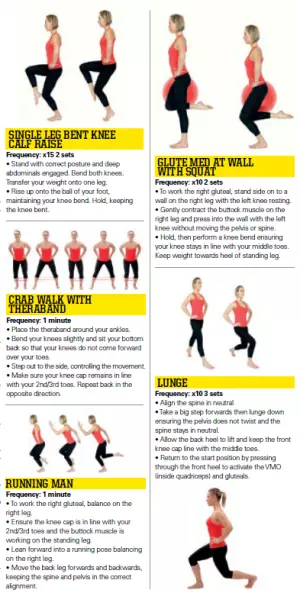
Make sure your body is strong enough to cope with endurance running, says Six Physio’s Rachel McCulloch @TriRadar Triathlon Plus
It’s no secret that endurance runners love to pound the pavements and hash out the miles. Unfortunately, it’s also common for endurance runners to end up in a doctor’s office or a physio clinic due to an overtraining injury. It’s a result of too much running and not enough cross training. Strength deficits in the gluteals, calfs, quads or core can lead to an inefficient gait or excessive loading to the tendons and bones. This is where overuse injuries arise from; runners knee, shin splits or Achilles’ tendinopathy to name a few.
Strength training is essential. Research supports its benefits in injury prevention, speed development and technique efficiency. There are also benefits for bone mineral density, mood and recovery time.
A common concern among endurance athletes is that they will gain bulk from strength training – this is not true. A good strength and conditioning programme will improve performance and minimise time away from injury.
Any change to a training programme must be steadily progressed, and strength work doesn’t come without a few drawbacks. It’s normal that as you challenge your body in a new way it will kick back at times. One of the most common complaints is muscles soreness after exercise –DOMS (delayed onset muscles soreness). This can last a few days but is normal. It’s a sign that your muscles have gone into recovery mode. During this time keep active with lighter training sessions.
There are principles to consider when planning your strength training using the acronym SPORRT:
Specificity The muscles you train must be matched to the demands of the activity and you ability levels.
Progression This should be gradual, but in order to see change you will need to overload the muscles. Progressing too quickly can be detrimental and cause injury.
Overload To see improvements you will need to train at a higher level than normal. With strength training this often means increasing the resistance or load. By overloading the muscles, your body will respond with functional adaption – building muscle tissue to meet the demand placed upon them.
Reversibility As our body adapts to our training needs, it also adapts when we rest for prolonged periods. If you take a break from strength training there will be some decline in muscle strength. Remember this when restarting a training programme.
Rest It’s important to include rest into your programme, whether this is in between sets or during a longer term training programme.
Tedium Vary things. Variety is the spice of life, after all!
Happily there is potential to see quick changes, within days even. This is not a true change to muscle strength but is often referred to as muscle memory whereby exercising specific muscles, your nervous system can improve its efficiency. This improved communication between your brain and muscles enables better activation of targeted muscles. True strengthening occurs closer to 12 weeks, the amount of time it takes our body to acknowledge the increased demand on the muscles and start building more muscle tissue.

